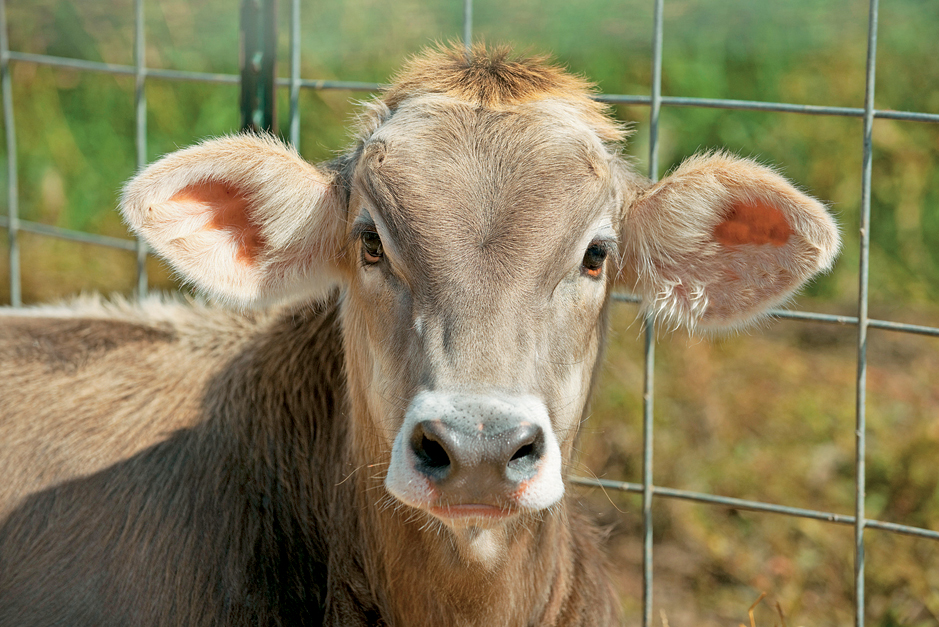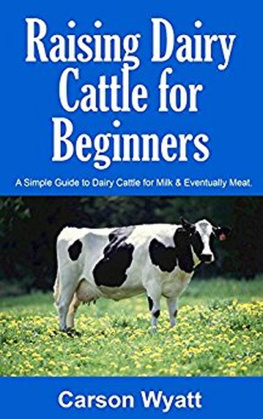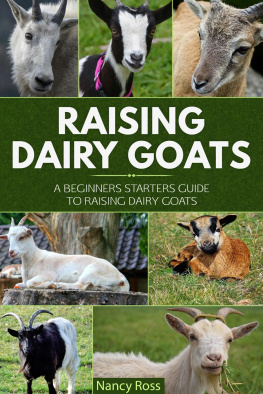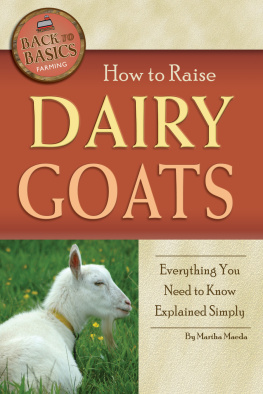THE
FAMILY COW
HANDBOOK


THE
FAMILY COW
HANDBOOK
A Guide to Keeping a Milk Cow

Text by Philip Hasheider
Photography by Daniel Johnson
Voyageur Press
CONTENTS

Chapter 1
Lets Get Started: Why Keep a Cow?
Chapter 2
Choosing Your Cow: How to Evaluate Cows
Chapter 3
Breed Guide: Is One Moo Better than Another?
Chapter 4
Housing and Fencing: Home Sweet Home
Chapter 5
Feeding: Whats for Dinner?
Chapter 6
Managing Manure: Just Compost It
Chapter 7
Milking: Adjusting Your Cow and Yourself to the Process
Chapter 8
Calving Time: The Cycle of Life
Chapter 9
Making Dairy Products: Say Cheese
Chapter 10
Health: Taking Care of Business
Chapter 11
Calves and Kids: Raising Up the Next Generation
INTRODUCTION


Daily chores with your milk cow can be a rewarding and relaxing start and end to your day.
FRESH MILK to pour over your morning cereal, thick cream to stir in your coffee, savory butter melting on your warm toastsounds inviting, doesnt it? Experiencing such simple pleasures on a daily basis is what owning a family milk cow is about.
Your friends may have pets, but you have something special: a family cow. Not for the bragging rights but for the down-to-earth practicality she offers. How many times have you looked at the plastic jug in your hand and thought, There must be a better way to get fresh milk? There is.
Start with a few acres of grassland in the country where your cow can roam. Accept the work necessary to keep her comfortable and healthy. Supply the daily labor for her care, and she will reward you with milk that can be consumed raw or handmade into numerous dairy products. Before you drift off to sleep dreaming of your partnership with a cow, however, there are important things to consider, such as selecting your animal, planning how her milk will be used, and learning the skills necessary for dairy cow husbandry. There will be challenges ahead, yet they are surmountable. In fact, they have the potential to transform the lives of you and your family.
Plan your approach to selecting a cow rather than acquire one on impulse. Identify your purpose for having a family cow before bringing one home. Establishing goals sets the stage for a more satisfying experience. For example, would you like to use your cows fresh milk for family use only, or do you want to sell it? Do you want to convert her milk into foods such as cheese, yogurt, butter, or ice cream? Do you plan to raise other livestock, such as pigs, and feed them the excess milk? Identifying your goals and having a plan helps utilize all the milk your cow produces so none goes to waste.
This book takes you through the steps necessary to enter successfully the world of dairying. You will learn how to purchase a cow, milk her, care for her and her calf, and many other essentials in keeping her. Youll learn how to turn your cows milk into delicious old-fashioned ice cream as well as the processes for making cheese, butter, and yogurt.
Cows are quite self-sufficient in their own right. Yet a key consideration of owning a dairy cow is the need to milk her each day and then make use of her milk in some fashion. Knowing how much milk your cow will produce is useful when finding the right one to fit your lifestyle.

Keeping a cow draws everyone in the family into the picture. Caring for her increases the knowledge and abilities of each family member.
There is a broad spectrum in the amount of milk dairy cows give, depending on both nature (their genetic inheritance) and nurture (the intensity of their management). Due to improved management practices and genetics, many Holstein cows produce over 50,000 pounds of milk each year. That translates to an average of over 135 pounds of milk per day for a full year. At the other end of this spectrum are cows that produce as little as 4,000 pounds per year, or an average of about 11 pounds per day. Most modern dairy farms would not keep a cow in their herd that gives so little milk; its not economically practical to cover the expenses of feeding and housing her. A low milk production cow, however, might be ideally suited to your farm and purposes. Most families would have a tough time figuring out what to do with 135 pounds of milk every single day of the year.
This handbook will be useful whether or not you have any livestock or farming experience. It starts with the basics and then develops the topics in more detail, offering suggestions and possible alternatives to the traditional way of doing things. You can adapt these ideas to fit your situation. In addition, you will learn a great deal from your day-to-day experiences and your cows individual nuances and quirks. While there are great similarities among cows, each cow has her own individual personality and characteristics that can endear her to you and your family.
Cows on the Farm and Changes in Dairying
Having a family cow used to be more common. Even in some urban areas, many people kept a cow or two for home use in the decades prior to World War I. Agriculture began to change dramatically after the war. More science-based applications were used to solve production challenges on farms. New and improved seeds and the increased use of tractors propelled agriculture to new levels of production to meet the growing demand for food. New urban sanitation regulations soon banished the family cow to rural areas. Consequently, urban consumers began purchasing their dairy products from grocery stores.
Better breeding practices and purebred livestock were promoted as a way to improve cattle quality and a farmers herd production. The Great Depression stymied production growth for several years with a return to self-sufficiency when many families went back to the farm. During and after World War II, dairy production again accelerated with university extension research providing information for improved animal husbandry practices.
The postwar boom created an explosion in farm production, which led to a surplus that, ironically, negatively impacted farm prices. Farmers produced too much food for their own good. While thrifty consumers benefited from this surplus, the low food prices had a profound effect on rural areas and often led to farm sales. Depressed milk prices left many farmers unable to pay their bills.
Next page











